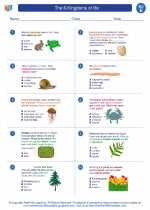Gorilla Gorilla: A Study Guide
Gorilla Gorilla, also known as the Western Gorilla, is a species of great ape found in the forests of central Africa. They are the largest living primates and are known for their intelligence and social behavior.
Physical Characteristics
- Size: Adult male gorillas can weigh up to 400 pounds and can reach a height of 5.6 feet when standing upright.
- Color: Their fur is typically black or dark brown, and they have a patch of silver or gray hair on their backs, which is why they are also known as "silverback gorillas."
- Hands: Gorillas have large, strong hands with opposable thumbs, allowing them to grasp objects and manipulate their environment.
Habitat and Diet
Gorillas are primarily found in the dense tropical and subtropical forests of central Africa. They are herbivores and primarily feed on fruits, leaves, and shoots. Their diet also includes roots, bark, and some insects.
Social Behavior
- Family Structure: Gorillas live in cohesive groups called troops, led by a dominant male known as the silverback.
- Communication: Gorillas have a complex system of communication that includes vocalizations, gestures, and facial expressions.
- Intelligence: They are highly intelligent and have been observed using tools and solving problems in the wild.
Conservation Status
Gorilla Gorilla is listed as critically endangered due to habitat loss, poaching, and disease. Conservation efforts are underway to protect their habitats and prevent further decline in their population.
Study Questions
- What is the habitat of the Western Gorilla?
- Describe the social structure of gorilla troops.
- Why are gorillas considered to be critically endangered?
Studying the Western Gorilla provides insight into the behavior, ecology, and conservation of these remarkable animals. It also highlights the importance of preserving their natural habitats for future generations.
.◂Science Worksheets and Study Guides Fifth Grade. The 6-Kingdoms of life

 Activity Lesson
Activity Lesson
 Worksheet/Answer key
Worksheet/Answer key
 Worksheet/Answer key
Worksheet/Answer key
 Worksheet/Answer key
Worksheet/Answer key
 Worksheet/Answer key
Worksheet/Answer key
 Vocabulary/Answer key
Vocabulary/Answer key
 Vocabulary/Answer key
Vocabulary/Answer key
 Vocabulary/Answer key
Vocabulary/Answer key
 Vocabulary/Answer key
Vocabulary/Answer key
